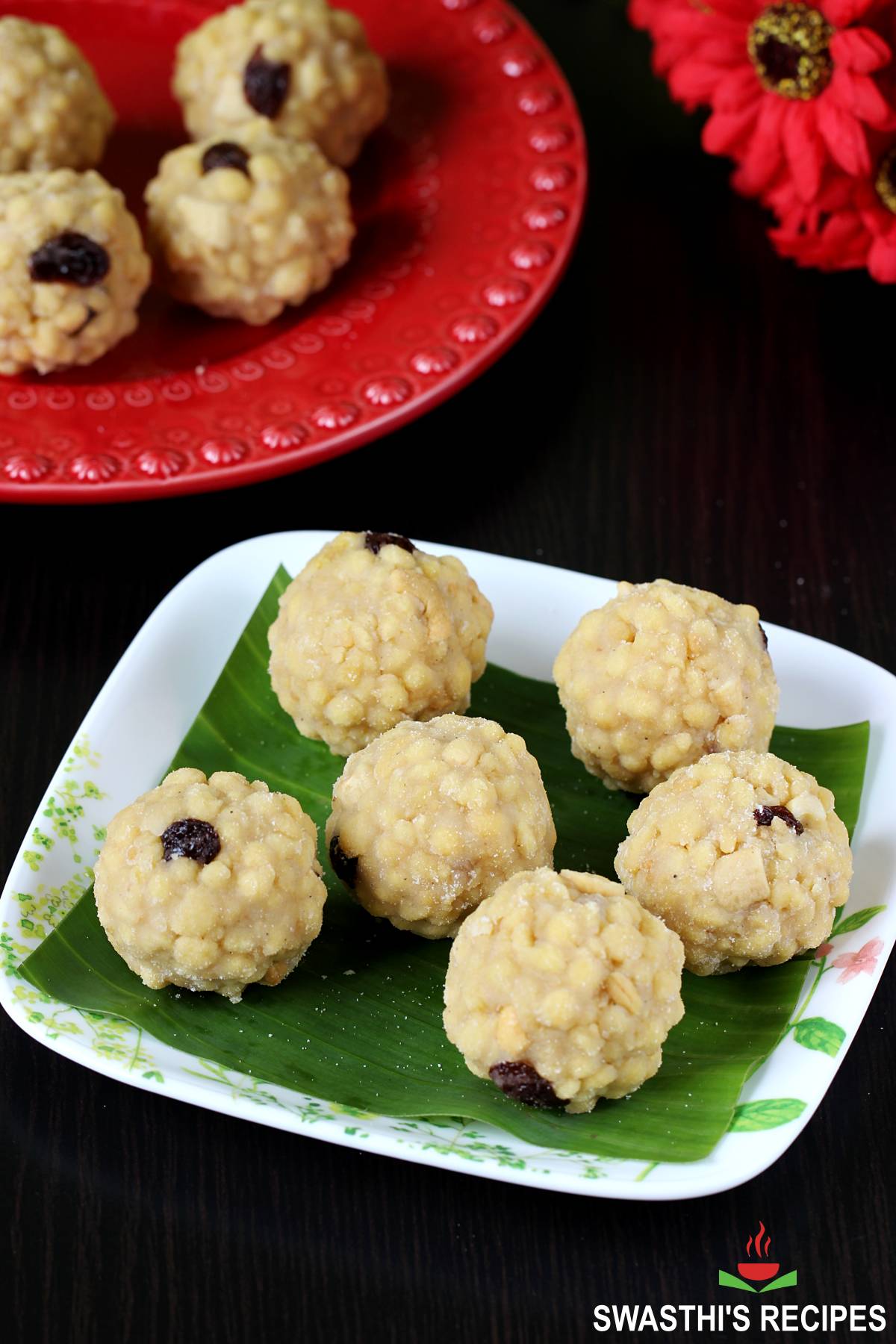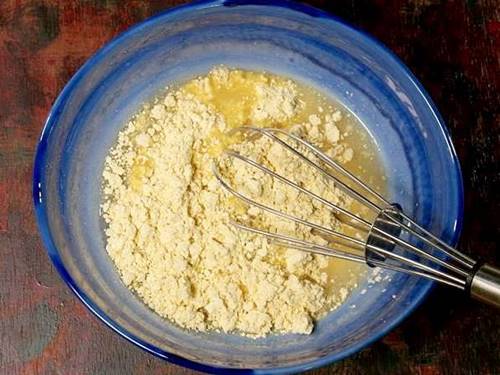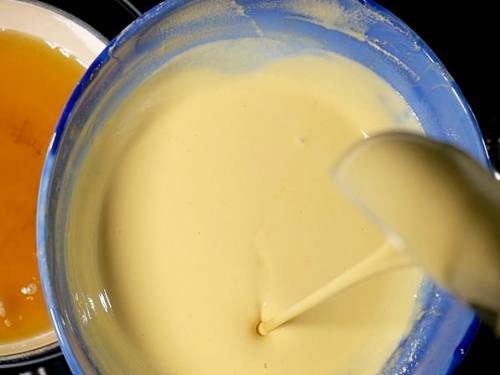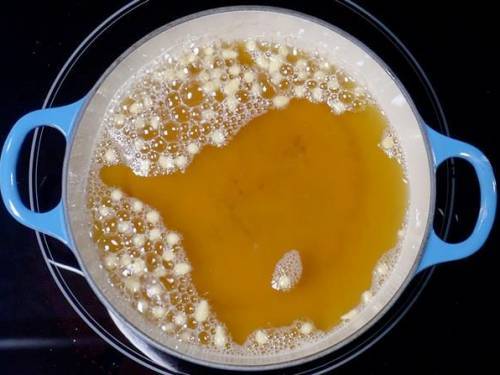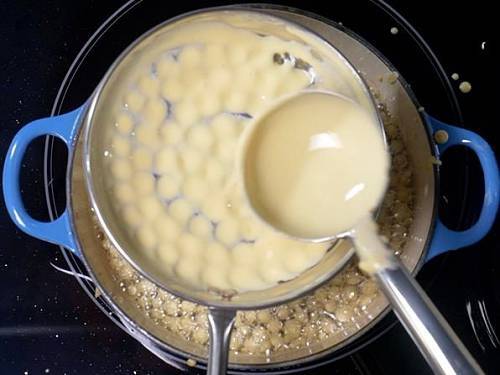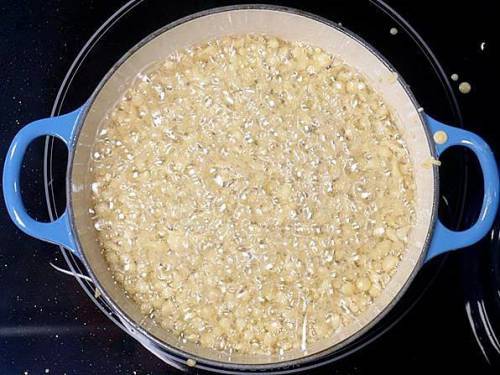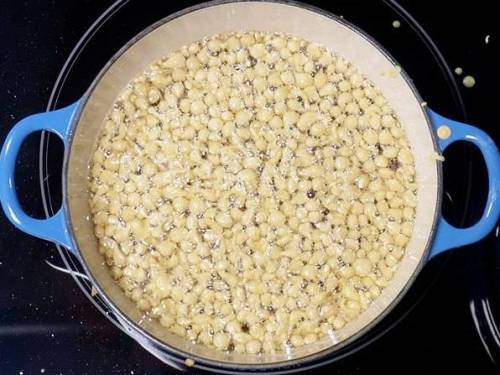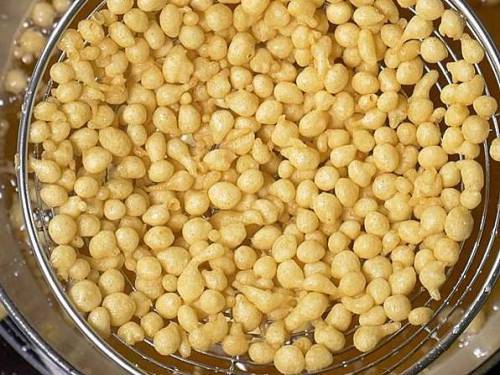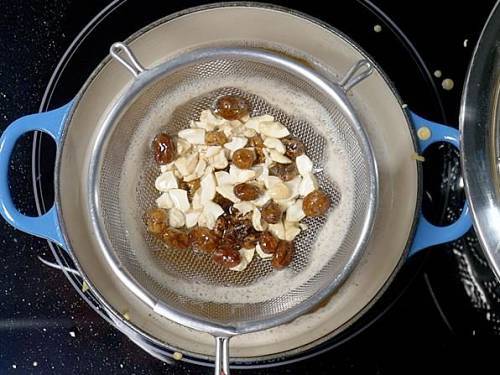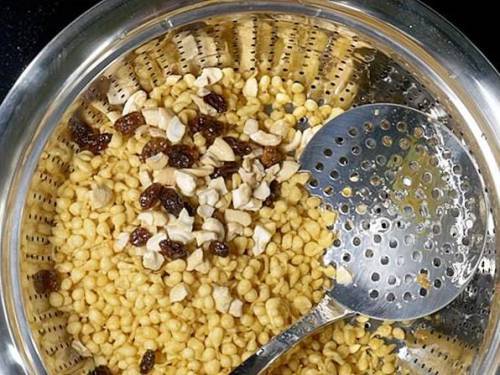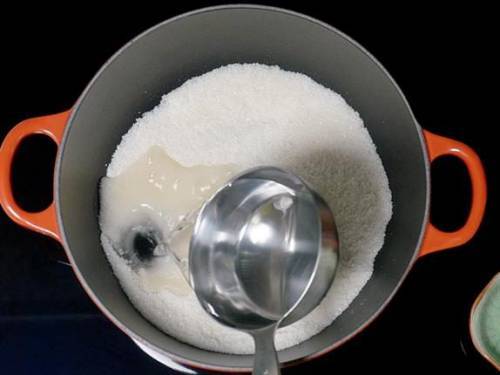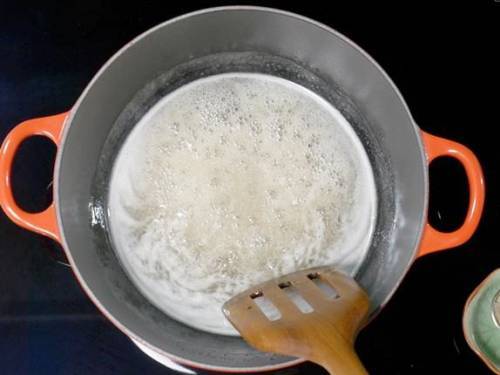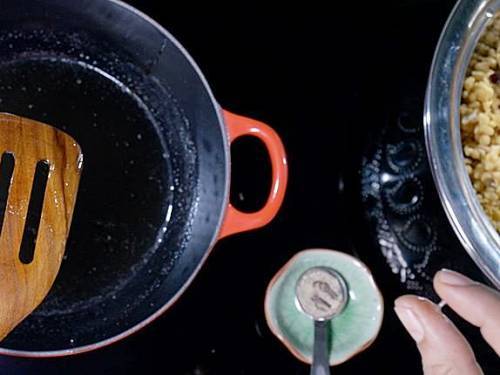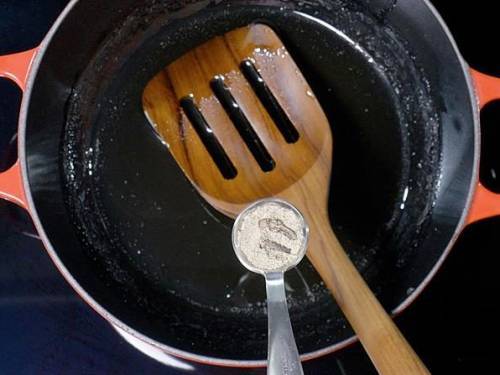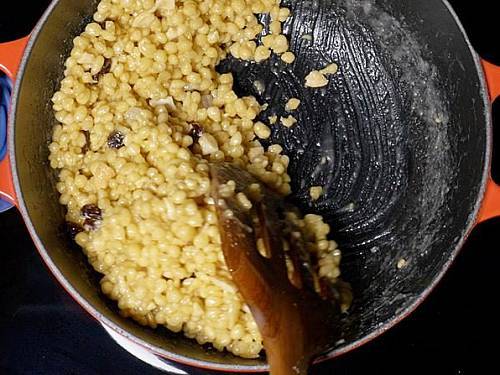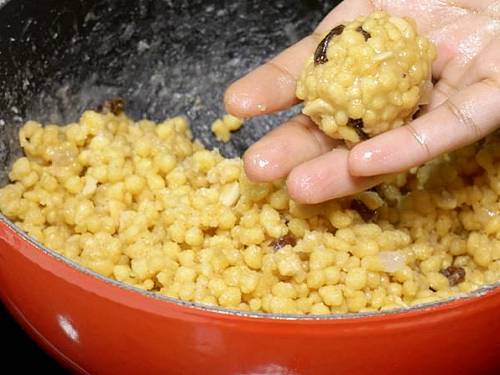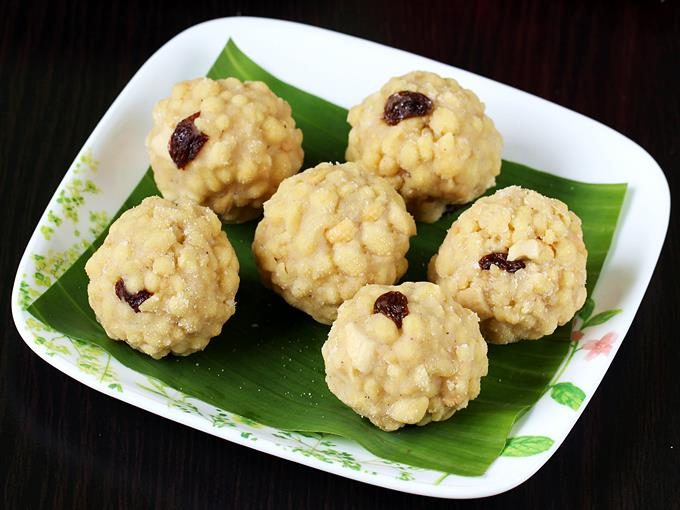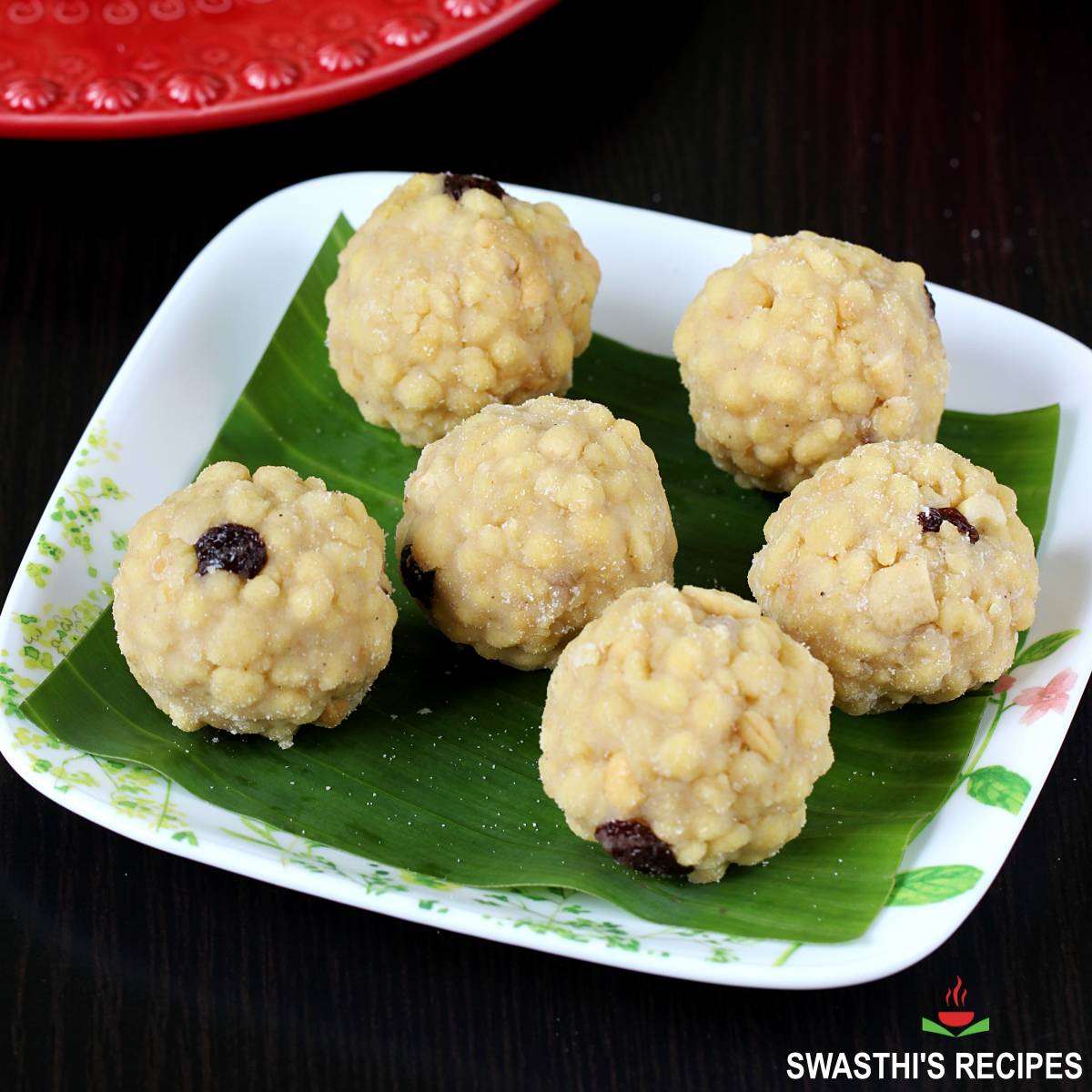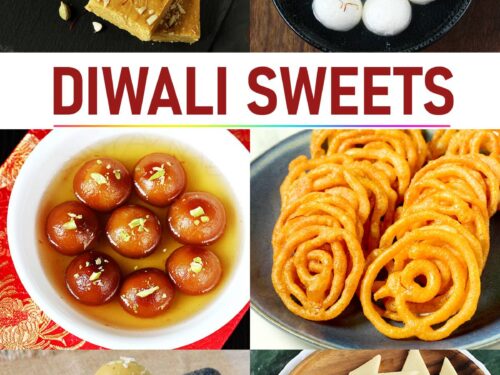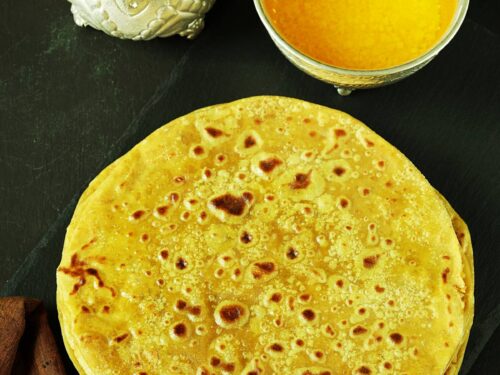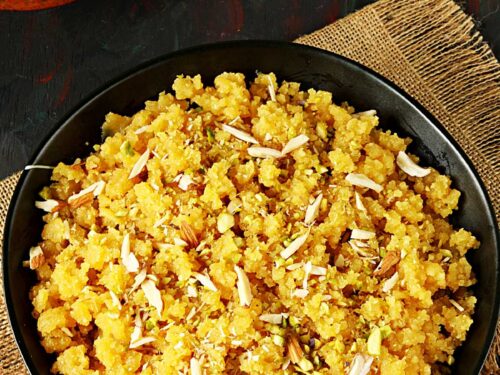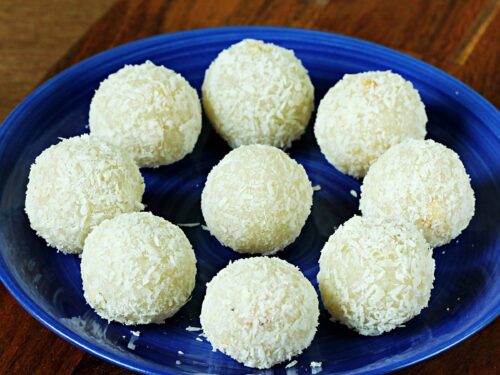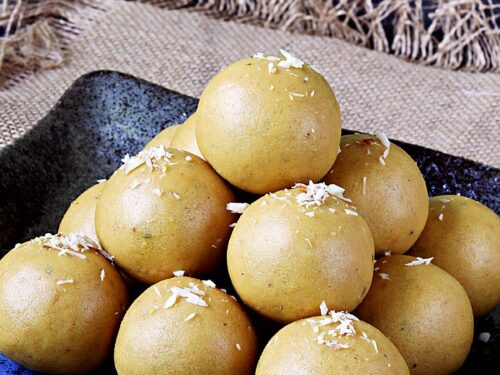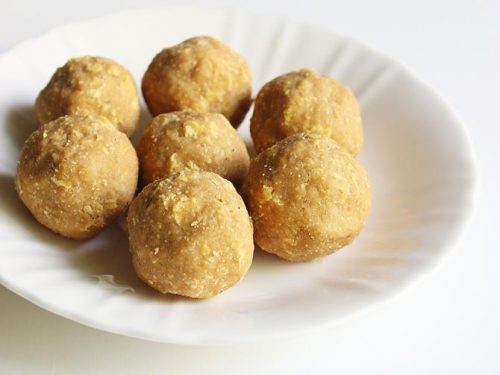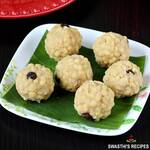In India, many kinds of sweets are made during festivals and celebrations to offer the deities, which is later shared among the friends and family. Even In many Hindu temples, different kinds of foods are offered and boondi ladoo is one of the most popular sweet offered. Boondi ladoo is traditionally offered in Venkateshwara Swamy temple in Tirupati and Sai Baba temple in Shirdi. In this post I share the method to make Tirupati boondi ladoo and a lot of tips to make normal boondi ladoo sold in sweet shops. If you are new to Indian cuisine read on to know more
About Boondi Ladoo
Boondi ladoo is a popular ladoo variety made with tiny fried gram flour balls known as boondi. The word “Boondi” is derived from the Hindi word “Boond” meaning a droplet. True to its name, boondi is made with droplets of gram flour batter which are fried in ghee or oil. The droplets form to balls as they are dropped in the sizzling hot oil and get fried. This fried boondi along with cashews and raisins is mixed with a cardamom flavoured sugar syrup. Lastly this mixture is pressed down and rolled to balls known as “Boondi ladoo”. Now if you are wondering what is a ladoo? Also spelled as laddu, these are traditional Indian sweet balls made with various ingredients like flour, semolina, lentils, grains, ghee, nuts and dry fruits. It is believed that ladoos have been consumed from the ancient times as quick energy boosting sweet snacks. Rava ladoo, besan ladoo, coconut ladoo and boondi ladoo are some of the most popular varieties. In Sweet shops you will also find colourful boondi ladoos to which artificial colours have been added. A lot of traditional Telugu speaking people make boondi ladoo for almost every family celebrations and occasion like Engagement, wedding, baby shower and then after having a baby. These are sent with the bride as a gift to her In-laws place after every occasion. Usually some hundreds to thousands are made for most such occasions to give as return gifts. I made these tirupati boondi ladoo a lot of times following a news video from YouTube. The original recipe is to make 5001 boondi ladoo. I scaled it down to make a smaller batch that even a newbie can easily try. These turn out really good and delicious. You will be able to make these (1X & 2x) even without a helping hand. To make anything more than that you will surely need a help since the mixture has to be rolled to balls while it is warm. The only step I have not followed in this recipe is the blending, since it is not clear in the original video. Not sure if the mixture is partially blended. For the method of making boondi ladoos I have followed the way we make at home. Now if you are wondering what is Tirupati boondi ladoo and how is it different from those we get in the stores, you have to read this
About Tirupati Boondi Ladoo
Boondi ladoo that are offered as Naivedhyam to Lord Venkateshwara in Tirumala temple in Tirupati are known as Tirupati Boondi Ladoo or Srivari Laddu. This naivedhyam is distributed as prasadam to the devotees after having darshan in the temple. Boondi for these ladoos are fried in pure ghee and not in oil, which is the hallmark of Tirupati ladoo. There are 3 or more boondi ladoo varieties available in Tirupati. Some of the kinds even include almonds, cloves and saffron. TTD keeps reviewing their recipes time-to-time to keep up the quality standards. Now no matter what we use and how we make, it is impossible to recreate the same tirupati ladoos like those from the temple. The aroma and taste comes closer but not the same because ladoos in Tirumala are made by expert cooks. Similar recipesDiwali sweetsDiwali snacksIndian sweets recipes
How To Make Boondi Ladoo (Stepwise Photos)
I highly recommend checking the video before attempting the recipe as it helps to know the right consistency of batter and the sugar syrup.
Making batter
- Keep all the ingredients ready as mentioned in the recipe card.
- Add 115 grams besan (1 ¼ cup gram flour) to large mixing bowl. Pour ⅓ cup water and begin to make a thick and smooth batter, adding little by little as required. Do not pour all the water at one time. The batter is likely to become lumpy if lots of water is poured at one time.
- One you make a thick batter, pour more and make a free flowing yet neither too thick nor too thin batter. Totally you will need ½ to ¾ cup water to make the batter. Before making boondi, we will have to check whether the consistency of batter is right to get them correctly round in shape. Since the boondi to make ladoo is not fried to crunchy texture (they are just partially cooked), the batter should not be made as thin as we make for the khara boondi otherwise they will soak up lot of ghee or oil.
- While you make the batter, heat up the ghee or oil. Tirupati ladoo is made using only ghee, so I have used ghee here. If you want you can use oil. But if you are using oil, I highly recommend adding 2 tablespoons ghee to the oil as this enhances the flavor of your ladoos.
Frying boondi
- There are different ways of checking the batter consistency. I check using my boondi jhara/ ladle directly. Heat the ghee until it is hot enough. Add 1 tablespoon batter to the boondi jhara (ladle) and shake it. If the consistency of the batter is right and the ghee is hot enough, boondi turns out round and perfect. If it is not then follow the next step.
- Boondi turned out to be good in shape after adding 1 tbsp water to the initial batter I made. To get them right make sure you follow these steps:
Ghee or oil has to be very hot (not smoking hot) otherwise boondi may not hold shape and may turn flat. They have to be fried on a medium flame. If the batter is too thin/runny then the boondi may turn flat or soak up lot of ghee. In this case add a tsp to tbsp of flour and mix well. If it is too thick, then you may get tailed boondi. Then add a tsp of water and mix well. You will have to adjust the consistency until you get the boondi right.
- Pour 1 ladle of batter to the boondi jhara (ladle). This recipe needs spreading the batter through out the boondi jhara with another ladle to help the batter drop off easily to the hot oil. This spreading is needed for 2 reasons:
Since the batter is not very thin, spreading the batter helps to drop the boondi quickly and easily with in few seconds. Secondly we do not need to wipe off the boondi jhara with a cloth or tissue after every batch if we are going to spread it using another ladle.
- As soon as the boondi is dropped, lot of bubbles come up.
- These will begin to cease as the boondi gets cooked. When the bubbles begin to reduce, remove the boondi.
- At this stage they should not be crunchy but must be cooked enough for the raw smell of flour to go away. Crunchy boondi won’t soak up the syrup so remove them when they are just cooked through and lose the raw flavor.
Frying nuts and raisins
- You will need a small deep frying strainer to fry the nuts and raisins. Fry 12 broken cashews in the same ghee until golden, then add 15 raisins. Fry them until they puff up.
- Switch off the stove and add these to the boondi. Small rock sugar pieces are added to the Tirupati ladoos. If you want to use add 5 grams of tiny rock sugar pieces or crush the larger pieces and add. Set this aside.
Making sugar syrup
- Add 1 ¼ cup sugar (225 grams) along with 3/4 cup of water to a large pot.
- Begin to make the sugar syrup by boiling on a medium heat until it reaches a one string consistency.
- Check the string consistency by taking little sugar syrup to a spoon. Cool it slightly and take a little in between your thumb and index finger. When you move the fingers apart, you should see a single string consistency. While the syrup boils, you will keep checking until you get this one string consistency. As soon as you see it has reached the one string consistency, then switch off the stove and move the pan aside to the counter.
- Add half teaspoon cardamom powder, 2 slightly crushed cloves and a pinch of edible camphor. Mix everything well.
- Add fried boondi now. At this stage there will be lot of sugar syrup in the pan.
- All the sugar syrup will be absorbed in a short time depending on your indoor temperature. It took less than 10 minutes for me and the mixture was warm. This is how your boondi ladoo mixture should look.
Shaping boondi ladoo
- When the mixture cools down, you will notice the syrup has been absorbed completely , this is the right stage to form the boondi ladoo.
- Take small portions of this and press down in your palms to shape ladoos. You will get about 12 boondi ladoos for this recipe. If you want to make the size of Tirupati boondi ladoo, then you may get about 4 to 5. Allow boondi ladoo to cool completely and store in a tight jar.
Pro tips
Ghee: Tirupati ladoo is made with pure ghee and this makes a lot of difference to the flavor and shelf life. Your ladoos won’t smell rancid even if you store them for a few weeks. However feel free to use oil to fry the boondi like the store bought ones.Combination of ghee and oil: At home when making in large quantities, we usually fry boondi in oil to which some ghee is added. This enhances the flavor of your ladoos but won’t increase the shelf life like the ghee laddus.Edible camphor is used for a unique divine aroma. But be cautious while you buy edible camphor since these days most commercially sold are synthetic pacha karpooram which are also toxic. Traditionally pacha karpooram was made from leaves and was also considered to be healthy. You can completely skip it if you do not have a good one.Store bought boondi ladoos are colorful as some of the boondi is made with batter to which artificial colors have been added. If you want to make colorful ladoos, transfer 2 tablespoons of batter to 2 to 3 bowls. Add colors as instructed. Fry the batter in the last batches.In Store bought boondi ladoos you will find different kinds of nuts and even seeds like magaz. If you want to use magaz, add them directly to the syrup.
Related Recipes
Recipe card
Boondi ladoo first published in October 2016. Updated & republished in October 2021.
